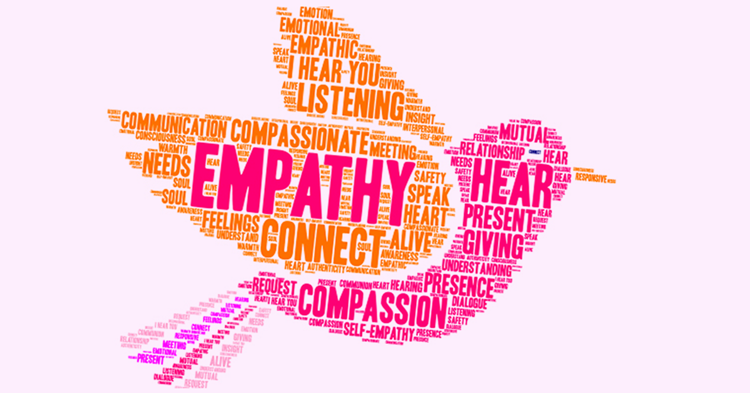5 Ways to Teach Empathy for Children of All Ages

Originally published April 2018
By Diana Davis
When we think of success, skills like collaboration, time management, and critical thinking may immediately come to mind. While these skills are important, many 21st century employers argue that empathy—the ability to identify with others and share their emotions—is at the heart of success. It’s also at the heart of being human. Empathy demonstrates that you can relate to other people, shows you are self-aware, and that you can deal with your emotions and other people’s struggles.
So how do we teach students to master a skill that’s rooted in emotion instead of fact?
Visual stimulation really helps students—anything where they can see, hear, and experience what’s happening with other people. It helps drive home themes that are connected to social and emotional learning, including diversity, respect, and social intelligence.
At Milton Hershey School in Hershey, PA, our pre-K to 12th grade students are learning how to be empathetic in and out of the classroom through creative activities that teach them to manage emotional and social situations.
Take a look at these five ways to instil empathy in students of all grade levels.
1. Colored paper exercise
To illustrate empathy, one of our middle school teachers starts by showing students a crisp, clean piece of colored paper and asking them to share positive adjectives that describe the paper. After students share their initial observations, we ask them to crumple, rip, or step on the paper. This becomes a visual learning opportunity as students realize that when they’re rude or unkind to people, it has a lasting impact—just like the ripped paper.
Outcome: students learn they have two choices: to offer care and concern, or tear each other down.
2. Movie clips
Television shows and movies are some of the best methods of teaching empathy to younger students. This allows them to experience what’s happening with other people, even if they’re fictional characters. For example, the movie Wonder has led to many meaningful discussions in our classrooms. We encourage students to share their thoughts and hold honest conversations about the main character who had multiple surgeries on his face.
Outcome: students learn how to communicate openly and respectfully about real-world situations that require social and emotional intelligence.
3. Role play exercise
In and out of the classroom, role play activities can help elementary students learn about other people. Our home life curriculum includes a lesson called “In Your Shoes” that asks students to think about what would happen and how they would feel if they were homeless or worked in a specific career. This type of role play exercise allows them to empathize with various individuals and professions.
Outcome: students learn how to view differences with respect and begin to develop a growth mindset.
4. Kindness campaign
To build positive school culture, our middle schoolers formed a kindness campaign this school year. Staff encouraged students of all ages to perform acts of kindness, and write down their actions on slips of paper that were displayed across the school.
To engage students, try setting a school-wide goal such as 1,000 acts of kindness in two weeks. This promotes positivity and teaches students to be proactive in the way they act toward students and adults.
Outcome: students learn how to be proactive instead of reactive when responding to situations where they have to communicate with others.
5. Positive messages
For high school students who are craving independence, it’s important to create a sense of community and belonging. We provide students with colorful sticky notes and encourage them to write positive messages to give to their peers. This allows them to learn from one another and consider how they can take ownership of relationship-building.
Outcome: students learn to express themselves in positive ways, which is an important part of empathy.
Empathy Moves Beyond Kindness
Ultimately, empathy is more than being kind—it takes it a step further. Empathy is about demonstrating a genuine respect for others and being able to positively respond to challenging situations because you understand the other person’s emotions. With this skill, students of all ages understand they have the capability to be leaders and can enter the 21st century workforce armed with compassion, understanding, and social awareness.
Diana Davis is the Social and Emotional Learning Curriculum Supervisor at Milton Hershey School. MHS is a cost-free private residential school located in Hershey, PA that serves more than 2,000 students from lower income families.

I am very interested in this program for my 6th grade students
Without empathy other socio-emotional skills are difficult if not impossible to understand and practice. I would agree that teaching empathy is the biggest challenge educators face today.